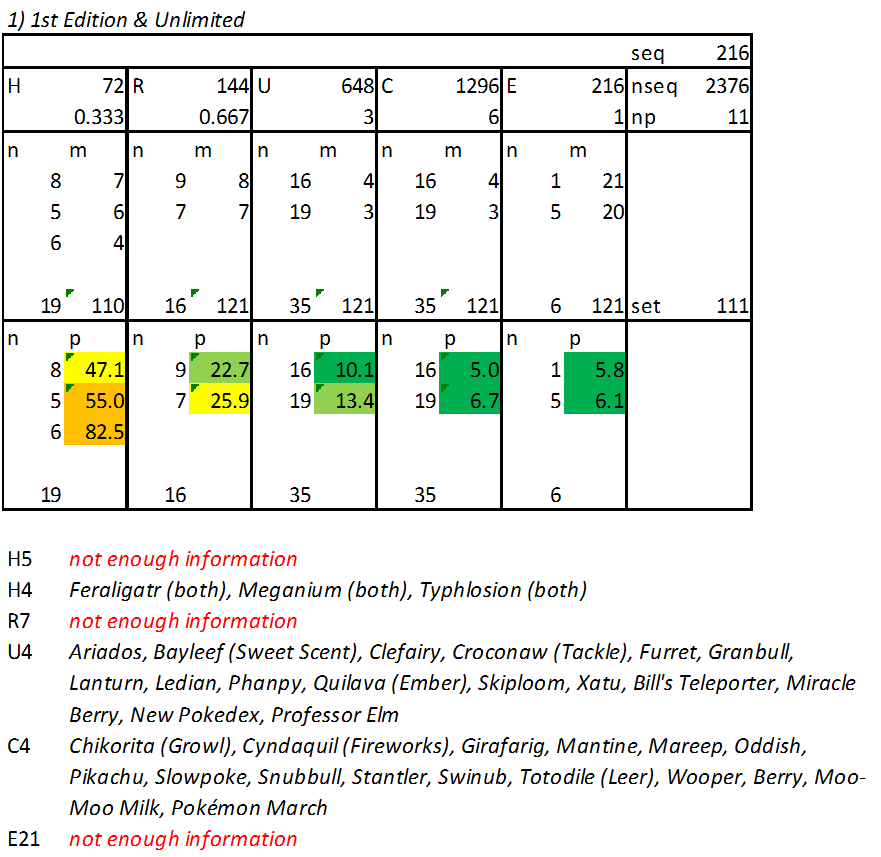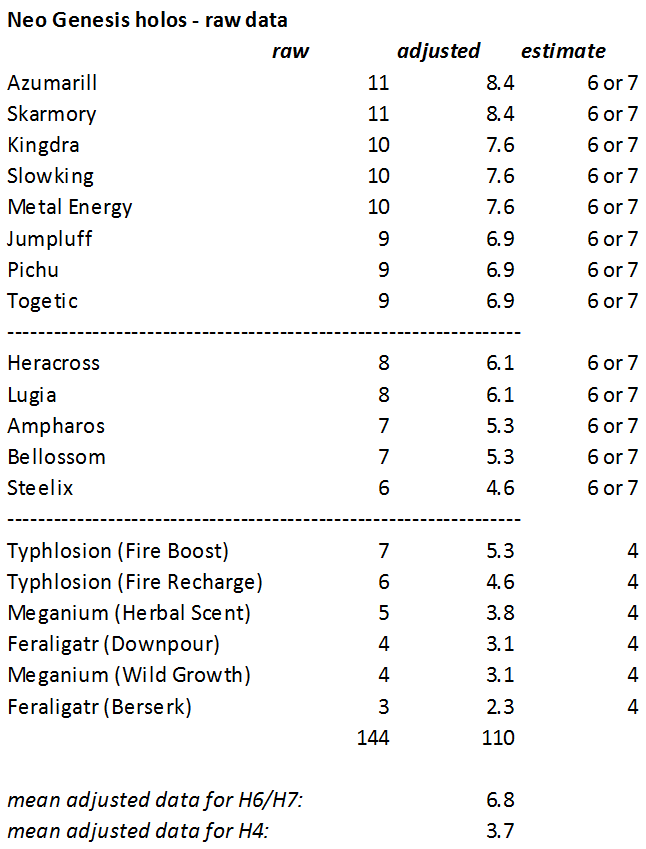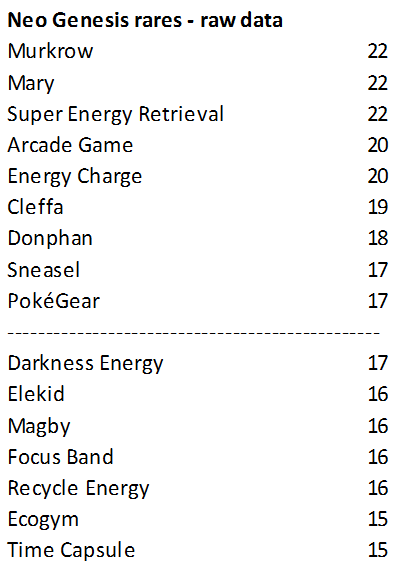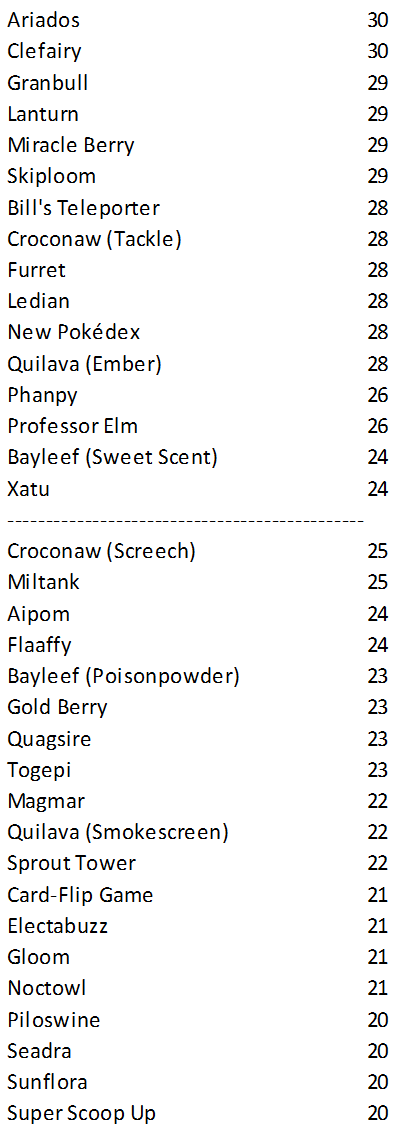Neo Genesis
So far, this rarity guide has not featured any huge surprises as to card rarities. That is because so far, there has been almost no indication of artificial rarity differences (i.e. larger differences than the sheet size dictates) introduced between cards of the same nominal rarity. The sole exception were the Basic Energies in Base Set and Base Set 2, and, let’s face it, that isn’t a piece of information that will be of much value for most collectors.
However, the differences in rarity between the Energies show that artificial rarity differences do in fact exist, and have existed since the very beginning of the TCG. I have also found a number of examples for more modern sets which will be discussed here in due time.
Neo Genesis is the first set for which I believe there are such artificial rarity differences for valuable cards. The rarity table looks like this:
My reason for believing that the two versions of Feraligatr, Meganium and Typhlosion are rarer than the other holos comes from the raw data of 12 complete box openings on Youtube:
The six cards featuring the final states of the starters are among the seven cards with the lowest observed pull rates, and the observed pull rates are significantly lower on average than for the other holos. If I adjust the 144 holos pulled in the videos to account for a sheet size of 110 (which remained the sheet size for holos well into the Nintendo era), I get an average of 3.7 for the final forms of the starters and 6.8 for the other holos. This leads me to the assumption that the sheet fearures H7, H6 and H4 cards, meaning the final forms of the starters appear half as often (rounded up) than the most ubiquitous holos.
This means that with a pull rate of 1 : 82.5, these are the rarest Pokémon cards to appear to date.
It is important to note that this is not the first instance where certain cards have had quite high or quite low observed pull rates. Lt. Surge’s Jolteon and Giovanni’s Nidoqueen appeared quite a lot in the Gym Challenge sample I compiled, and Steelix appeared fewer times than one of the Typhlosions in Neo Genesis. But there is no apparent reason for these cards to have different rarities than others, while making the two variants of the fully evolved starter Pokémon rarer makes the pull rates for the different Pokémon species more balanced. That is why I give more weight to observed differences in rarity if there is a plausible explanation.
The other sheets don’t contain any major surprises. For the rares, there is too little data to say anything about individual card rarity (the dashed line shows where the transition from R8 to R7 would occur):
Using the method described in an earlier post, I was able to reconstruct how many times the individual uncommons likely appeared on the sheet, and the data is in good agreement with the raw data below (the dashed line showing the transition from U4 to U3):
The commons sheet is known (see Uncut Sheets).
Note that for the starters and their middle evolutions, one version is always C3 or U3 and the other is C4 or U4.
For the Basic Energies, there is not enough data for any definitive conclusion. From a small sample, Lightning and Psychic Energy appeared the most often (in Gym Heroes it was Lightning Energy, Gym Challenge I did not look at). This is the last WotC era set to feature Basic Energy cards in booster packs.



